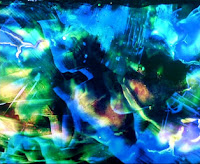A MEDIUM FOR EACH ARTIST
By Nick Binetti
As a student of Carleton University’s film program, which is purely theoretical, and involves no hands-on practical work, and as a young filmmaker who has worked exclusively within digital mediums, I’ll attempt to present and discuss why film matters, based on my own unique perspective.
Since my early adolescence, the film industry, and indeed the world at large, has strived to move towards a digital landscape. The rise of the internet and relative inexpensive cost of digital production has given countless filmmakers across the world a voice they otherwise would not have. Growing up, I witnessed these results, these benefits, and found it difficult to believe that there were still people in the community clutching there Super 16mm, who felt that film was worth the time and effort for what now amounts to a near negligible difference. I believed these people to be the contemporary equivalents of those who said that film wasn’t an art at the medium’s inception; those who believed the real cinema died upon the introduction of the talkie; those in the 1940s and 50s who viewed colour as too fantastical and brilliant to ever catch on in any major way; all the naysayers who have been slow to change in a world that never stops spinning.
 |
| Stan Brakhage |
But there is one significant difference between these previous transitions and the move from celluloid to digital: while making a black and white silent film on celluloid might not garner the same audiences as, say, the next CGI dominant summer blockbuster (and, by extension, be less likely to be made), it was still possible for an artist to make a film true to their vision. With the digital revolution already well underway, it’s difficult to say if that will still be the case this time.
Professors in class have told stories of early Russian filmmakers scrapping images of film stock to recycle and reuse what little was available, and I fear this may be the future for all celluloid filmmakers. The number of manufacturers of good old fashioned celluloid film is dwindling, and who knows how available film stock will be 10 years from now?
Film and digital are completely different mediums, regardless of the fact that they’re often used for the same purpose. The procedure of capturing a moving image on a physical film strip is substantially different than translating an image into binary, later to be interpreted by a computer program into a representation of the original image. Celluloid requires much more finesse and dedication to get the shot you want, and the process in turn affects the product. While, again, I can’t say for sure since I’ve yet to dabble in filmmaking outside of the digital world, I would imagine that the editing process - and the emotions the editor feels throughout - is drastically different when each frame in front of you is a physical picture that you had to measure and light meticulously for perfection - or conversely appreciating celluloid’s ability to occasionally capture the world in a completely different manner than we intended.
Film matters because it should be up to the artist, not the almighty dollar, to decide which medium he or she works through. Art is very personal, and to have our cinematic options limited to digital, with constant codec and format issues, would be an atrocity. The cinema will benefit most from an ecosystem composed of both celluloid and digital. There is a place for both, we just need to remind people why film matters.




